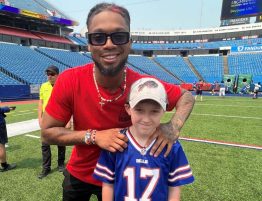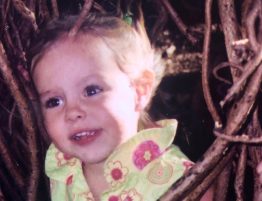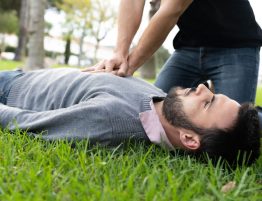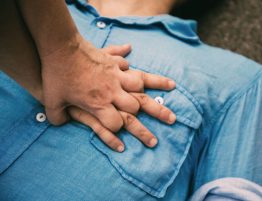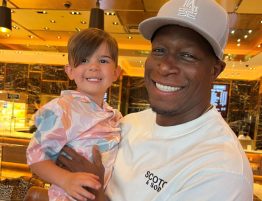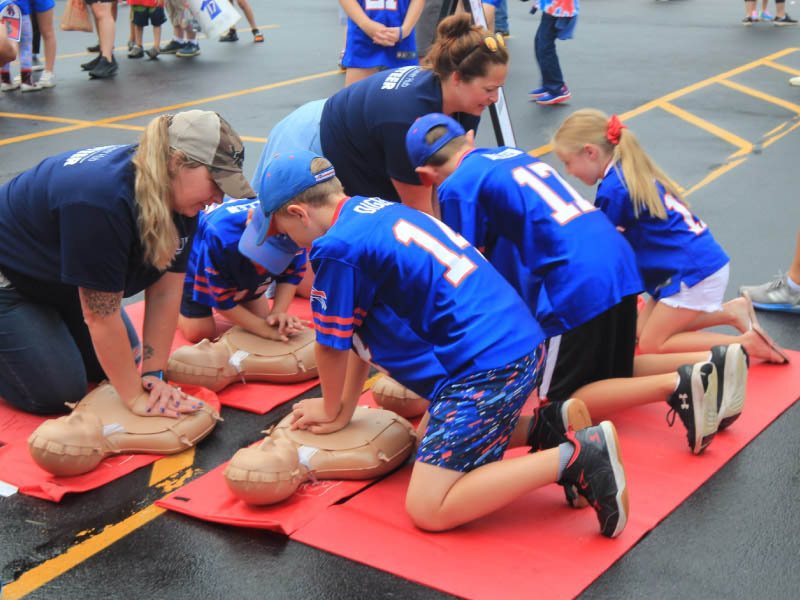
To some people, sixth grade might seem a little young to be taking responsibility for saving lives. Riley Clower and her classmates in Laramie, Wyoming, would disagree.
Last fall, Riley and some fellow students at Laramie Middle School received CPR training at the nearby University of Wyoming. They practiced on manikins, heard songs that helped set the pace and watched a video about a girl who used CPR to save her father.
They learned that doing chest compressions was “harder than you would think,” the 12-year-old said. “But we all figured out that we could all save someone.”
CPR experts say she’s exactly right. And far from considering her too young, they say CPR training can be valuable for people not only her age, but for students who are much younger.
“I think learning CPR should be almost as fundamental as tying your shoes and looking both ways before you cross the street,” said Alik Matthews, a registered nurse and CPR instructor in Buffalo, New York.
Each year in the United States, the American Heart Association estimates that roughly 350,000 people not in hospitals have a cardiac arrest, where the heart suddenly stops beating. CPR, if performed immediately, can double or triple a person’s odds of survival. But only about 40% of people receive bystander CPR.
When one considers that about 72% of adult cardiac arrests happen at home – and about 80% for children – “oftentimes the first witness might actually be a child,” said Dr. Marina Del Rios, an emergency medicine doctor and associate professor of emergency medicine at the University of Iowa in Iowa City.
But children as young as 4 can be part of the “chain of survival” after cardiac arrest, Del Rios said. She co-wrote a 2023 scientific statement from the International Liaison Committee on Resuscitation about CPR titled “Kids Save Lives.”
Del Rios said that a 4-year-old can learn that if they see someone collapse, they can call their name and check their breathing. “And then the next step is calling 911, involving emergency medical services as soon as possible.” Kindergarten-age children can follow instructions from an automated external defibrillator, which can shock a heart back to its proper rhythm.
Learning how to do chest compressions can come later. “By the time they’re 10, 11, 12, there might be enough body strength to deliver the right depth and rate,” Del Rios said. Chest compressions should be at least 2 inches deep at a rate of 100 to 120 beats per minute.
Beyond learning immediately useful skills, Del Rios said, training for young children instills attitudes that could make them more likely to take action as adults.
“The idea is really to turn bystanders into rescuers,” she said.
Del Rios likened the training to teaching young students how to “stop, drop and roll” when a person’s clothes or hair catches fire.
“When you learn things as a child, you’re more likely to carry that on throughout your life,” she said. “And so, just as we may teach kids how to wash their hands before dinner or load the dishwasher, this is just another task that if you learn early on, you’re more likely to continue doing that throughout your life.”
Kids don’t see training as a chore, though, said Matthews, who works with people of all ages. The kids he has met go “all in.”
“They love to participate,” he said. They love to ask questions about “what-if” scenarios, “because kids’ minds go everywhere. They’re very imaginative. And this is oftentimes their first real exposure to this material.”
Matthews believes that a youthful mindset might even help kids in a real crisis. Rather than stopping to think things through or awaiting formal instruction, they may be more likely to act, he said. “They call 911 at the drop of a dime.” And that, he said, “can make a lot of difference in saving a life.”
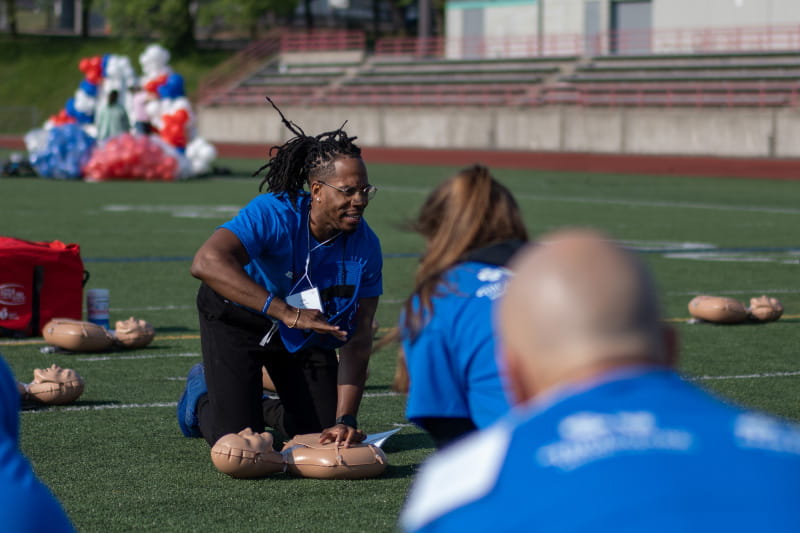
CPR classes do need to be tailored to children, he said. “You really want to make things extremely simple and direct for kids. You want to give them lots and lots of time with hands-on participation, just to keep them engaged.” If you talk at them the whole time, he said, “they’re going to get bored, fall asleep, walk away. But as long as you keep them involved, they are very responsive.”
It helps to adjust the playlist for teaching the proper rhythm for compressions. Disco-era students might know that the Bee Gees’ “Stayin’ Alive” works, but Matthews and his team have a separate playlist for the young ones. “The biggest hit is, by far, ‘Baby Shark.'”
Kids and teens also make excellent champions for training. Matthews and Del Rios both said that when they teach community events, it’s often the kids who pull the rest of the family in.
For older kids and teens, Matthews often is asked to take photos and videos of them in action for the sake of social media.
“This generation of kids loves to work together and just be known,” he said. Some show up for class just because they thought it would be something cool to post, “and they ended up learning and sharing it. And even more kids joined the class after that.”
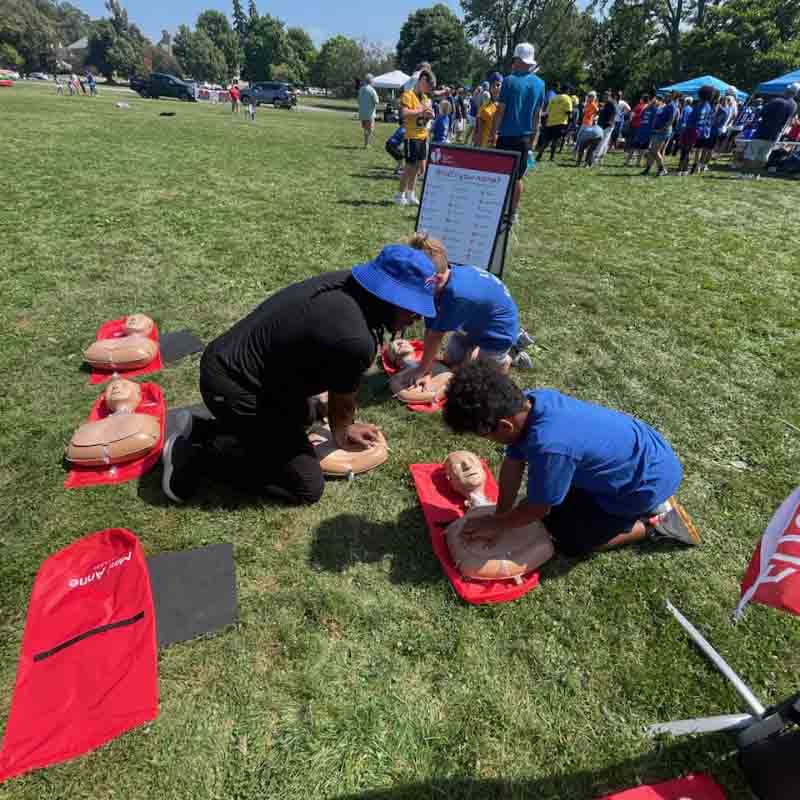
Del Rios led a study at one high school in Chicago that showed how each ninth and 10th grader who was taught CPR ended up teaching about five other people on average. Other researchers have found similar results. As more states require CPR training in high school, she said, that “multiplier effect” could become “an incredibly powerful tool to diffuse CPR knowledge.”
In Wyoming, Riley’s school benefited in just that way.
Physical education teacher Anne Moore said that Riley was one of six Laramie Middle School students selected to attend a “Healthy Kids Roundup” at the university. Students from across the state spent a day learning healthy activities, from making snacks to playing pickleball. Then, they worked with their teachers to select the best experiences for a family fitness night at their schools.
When Moore asked the Laramie students which of the activities they were most interested in duplicating, everyone immediately told her, “‘We have to do the CPR!'” she said. “That was the No. 1 thing on their list.”
Riley said CPR hadn’t been a priority for anyone until their university experience. “And then we were like, ‘Oh, learning CPR is actually way more important than you’d think.'” They thought friends and family members might be just as interested.

The event they created drew 300 to 400 people, Moore said. It featured hands-only CPR training from local firefighters, who volunteered to help. The school also watched a video made by America’s best-known survivor of cardiac arrest, the Buffalo Bills’ Damar Hamlin, who collapsed during an NFL game in January 2023.
Laramie feels a connection to the team. “We’re huge Buffalo Bills fans here,” Moore said, because quarterback Josh Allen was a star at the university. Riley said her dad and brother were watching the “Monday Night Football” game where Hamlin had to be revived after his heart stopped.
Riley, who’s interested in becoming a pediatrician or other type of doctor, said she hopes she never has to use CPR. But if the need arises, Riley said she and her classmates are ready.
“We know we’re strong enough to do it,” she said. “So we know we could save someone.”
Moore said another CPR event is planned for the spring, thanks to aid from the university.
Del Rios said that to reach more students, schools need just that kind of support – from governments, emergency management services and community and philanthropic organizations. Most states now require students to learn CPR before high school graduation.
Youthful enthusiasm definitely can help improve the odds of bystanders becoming rescuers, she said.
Kids deserve more credit, Del Rios said. “This is empowering them with the possibility of saving a loved one.”

